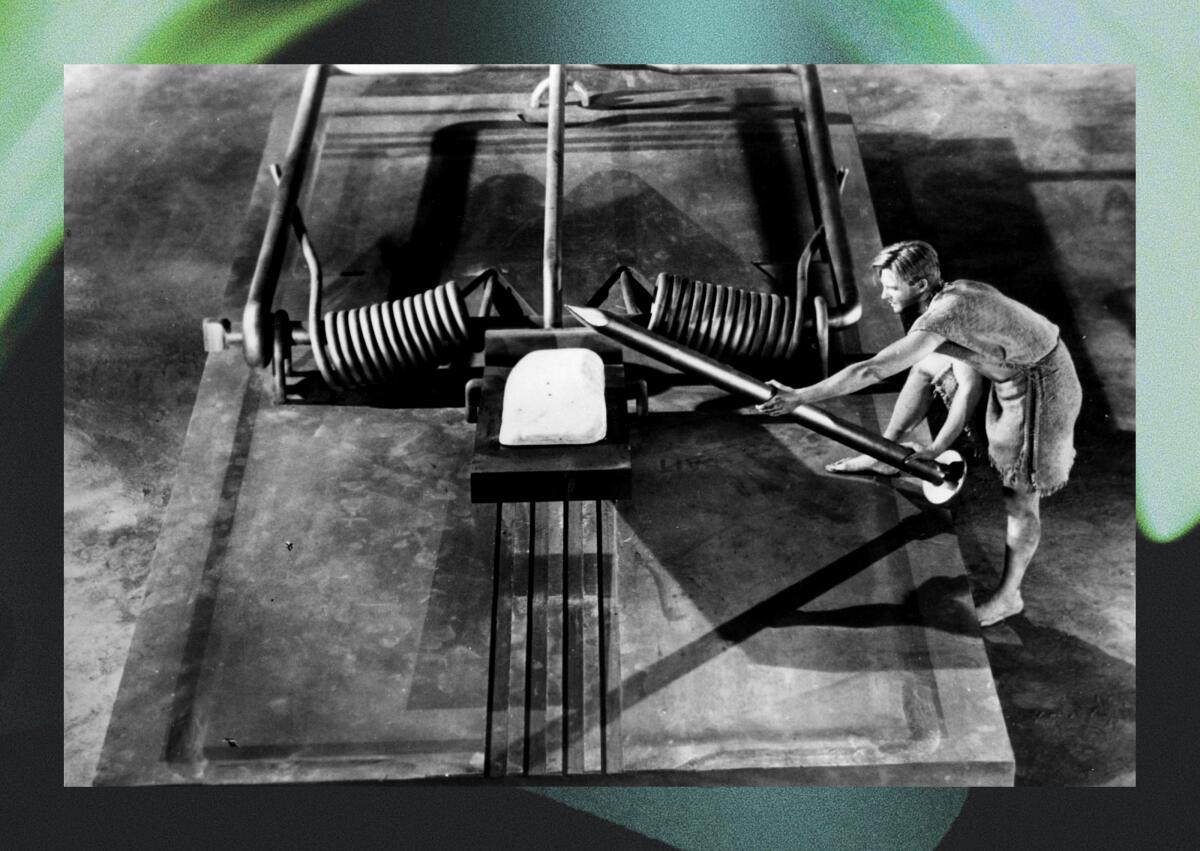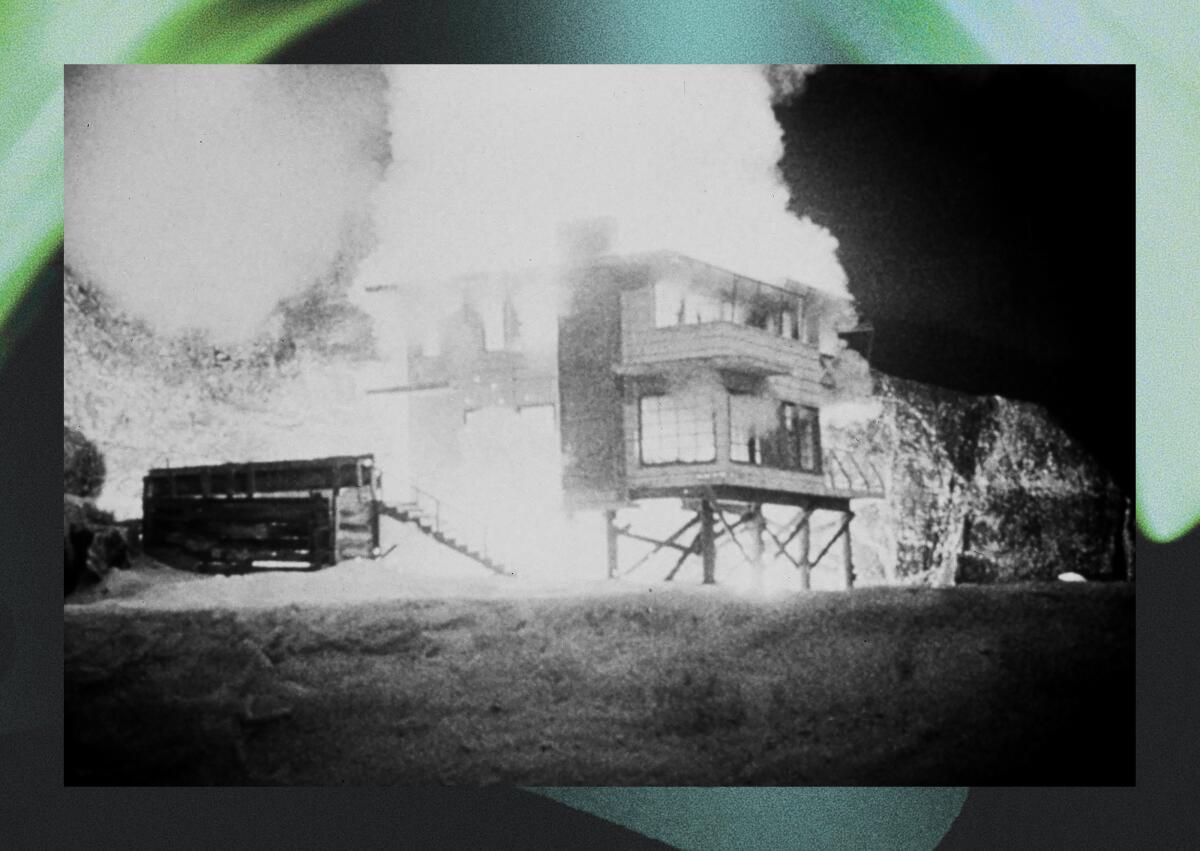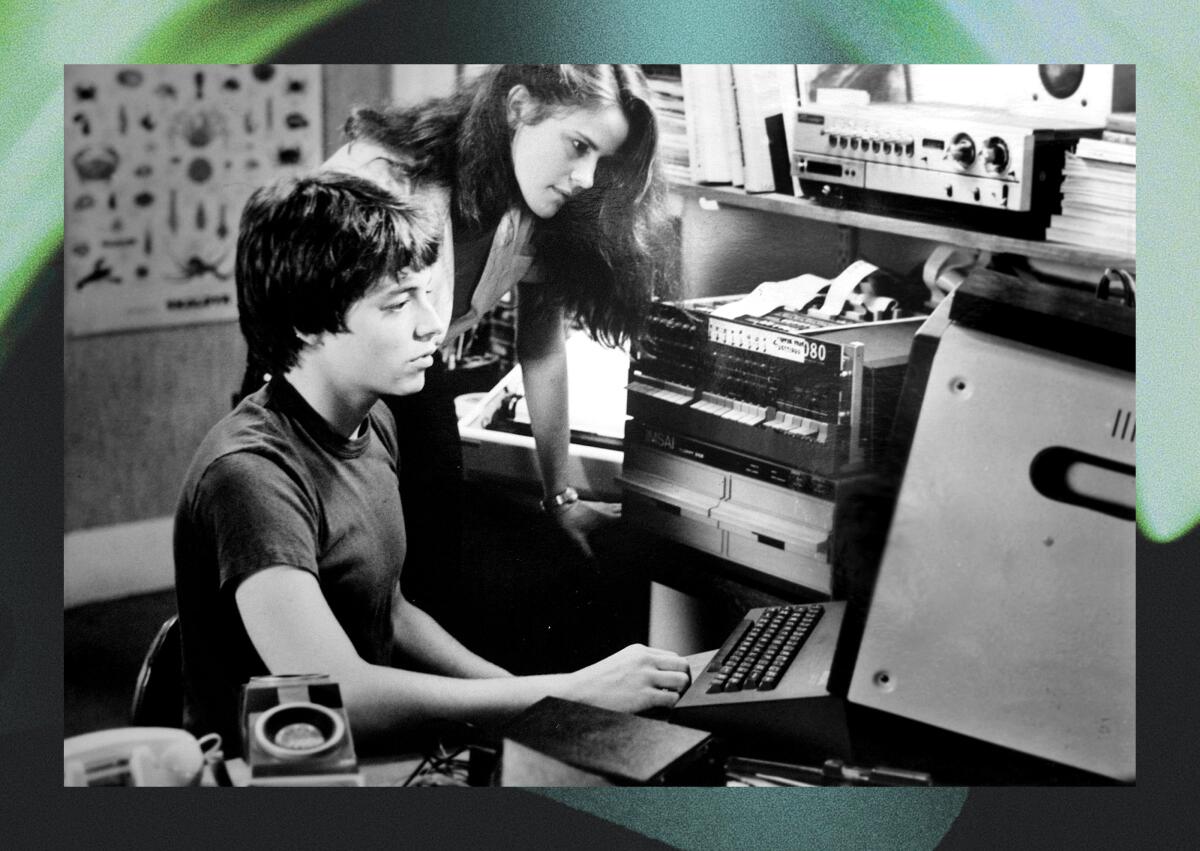Sign up for The Envelope
Get exclusive awards season news, in-depth interviews and columnist Glenn Whipp’s must-read analysis straight to your inbox.
You may occasionally receive promotional content from the Los Angeles Times.

The awards juggernaut “Oppenheimer” is the story not just of a man, J. Robert Oppenheimer, but also the world he helped create, a world in which fear of the atomic bomb, and then the hydrogen bomb, became a regular feature of American life. Oppenheimer, played by Cillian Murphy, saw the terror coming, and experienced his fair share of remorse; some of the movie’s most indelible scenes depict the Los Alamos honcho shuddering at what he hath wrought.
The movies, meanwhile, saw the capacity for atomic terror as well, starting in the ’50s, running through the ’60s, and carrying over into an age of renewed anxiety in the Reagan-era arms buildup. These movies encompassed sci-fi, drama, noir and even comedy as they spotlighted a brave new world marked by duck-and-cover drills, apocalyptic speculation and the legitimate possibility that the world could end at any moment, thanks largely to the man who, cribbing from the Bhagavad Gita, allegedly described himself as “Death, destroyer of worlds.”
The actor and director Christopher Nolan share a mutual interest in conveying a character’s emotional conflict through close-ups that linger on an actor’s face and allow the audience to feel inner turmoil.
The first wave of atomic movies were sci-fi, a genre that, as film historian Foster Hirsch points out, didn’t even exist as a genre in America until the 1950s. “When Hollywood did handle the atomic age, it was handled not in a straightforward, realistic way, but in a fantastic way, allegorical and metaphorical and often through monsters,” said Hirsch, author of “Hollywood and the Movies of the Fifties,” in a recent video interview. “That was how Hollywood was able to dramatize the impact of the bomb and the fact that we had the power to blow ourselves to smithereens.” Hirsch points to the murderous Arctic creature of “The Thing From Another World” (1951), the rampaging dinosaur awakened by atomic testing in “The Beast From 20,000 Fathoms” (1953) and the giant ants swarming the New Mexico desert in “Them!” (1954).

Among Hirsch’s favorite movies of the period is Jack Arnold’s “The Incredible Shrinking Man” (1957), a metaphor-laden fantasy in which a businessman (Grant Williams) is reduced to near-microscopic size after exposure to a cloud of radiation and insecticide. “We shrink to zero as if we are reborn into another world,” Hirsch says. “It’s the end of this world and the beginning of another parallel universe that we can’t enter yet.”
But sci-fi wasn’t the only genre worried about the bomb in the ’50s. The same decade brought Robert Aldrich’s “Kiss Me Deadly” (1955), a deeply cynical film noir starring Ralph Meeker as pulp novelist Mickey Spillane’s sleazy private detective Mike Hammer. Hammer is on the trail of “the great whatsit,” a highly coveted case that everyone seems willing to kill for. Hammer figures there’s some kind of treasure inside. He has no idea. A police lieutenant tries to explain the stakes: “I’m going to pronounce a few words. They’re just harmless words. Just a bunch of letters scrambled together. But their meaning is very important. Try to understand what they mean: Manhattan Project. Los Alamos. Trinity.” He sounds as if he’s just come home from seeing “Oppenheimer.” But he’s trying to warn Hammer about the case, which is in fact Pandora’s Box. And when it’s opened, in the film’s climax, it leaves a mighty cloud.

Anxiety ramped up in the ’60s. The Cuban Missile Crisis, in 1962, made the threat of impending nuclear war more real than ever. And the movies were there to respond, first as comedy, then as tragedy. 1964 brought both “Dr. Strangelove” and “Fail Safe,” which used the same basic premise — systemic failure leads to nuclear war between America and Russia — to yield drastically disparate movies.
Stanley Kubrick’s “Strangelove” presents a psychotic, gung-ho general, Jack D. Ripper (Sterling Hayden), who orders an attack on Russia in fear of a Communist plot to drain his “precious bodily fluids.” The pitch-black comedy that follows encompasses hot-to-trot general Buck Turgidson (played by George C. Scott and modeled on U.S. Strategic Air Command head Curtis LeMay); ineffectual U.S. President Merkin Muffley (Peter Sellers), a dead ringer for two-time Democratic presidential nominee Adlai Stevenson; and Dr. Strangelove himself (also Sellers), a U.S. military advisor and Third Reich holdover tickled pink by the prospect of mutual destruction.

The more melancholy take arrived later in the year. In Sidney Lumet’s underrated “Fail Safe,” a computer glitch sends U.S. bombers toward Russia. The stoic president (Henry Fonda) negotiates with his Soviet counterpart as the clock ticks; the two men eventually arrive at a horrific but somehow reasonable compromise that essentially trades the destruction of Moscow for the destruction of New York City. If “Strangelove” was a belly laugh, “Fail Safe” was a muffled cry. But there was one more key piece of atomic filmmaking that year, this one a strategic strike: The “Daisy” Lyndon B. Johnson presidential campaign ad, which used an innocent little girl, a flower, a countdown and a climactic mushroom cloud to suggest that Johnson’s opponent, Barry Goldwater, would lead the world to Armageddon. Political advertising would never be civil again.
The ’80s brought a new age of nuclear fear, as the U.S., under President Ronald Reagan, engaged Russia in a revamped arms race. Like 1964, 1983 proved to be an eventful year for atomic cinema. More than 100 million people tuned in to Nicholas Meyer’s “The Day After,” a TV movie that dramatized the effects of nuclear holocaust in Kansas. Meanwhile, in John Badham’s “WarGames,” a mischievous teen (Matthew Broderick) accidentally hacks the U.S. missile system, leading the country once again to the brink of mass destruction.

This is the era that inspired journalist James Oliphant’s obsession with atomic movies, an obsession that would lead him to create his Substack Nuclear Theater. Musing on movies about the nuclear threat and broader Cold War issues, Oliphant taps into his years as an ’80s high school student who could not learn to stop worrying and love the bomb.
“There was this sense that there was no way out,” he said in a video interview. “I couldn’t even imagine that there would be any sort of disarmament, or that any side would back down. Of course, you couldn’t conceptualize that the Soviet Union would fall apart in a matter of years, and that the threat would seemingly vanish.”
Forty years later, we catch up with the directors of “The Day After,” “Testament” and “Threads,” films that shocked viewers and changed the minds of politicians.
But it never vanishes entirely. In a sense all of these movies are the children of Oppenheimer, and the parents of “Oppenheimer.” That Trinity test blast, depicted so hauntingly in the movie, resonates still. And the technology he spearheaded remains more than capable of destroying worlds.
Sign up for The Envelope
Get exclusive awards season news, in-depth interviews and columnist Glenn Whipp’s must-read analysis straight to your inbox.
You may occasionally receive promotional content from the Los Angeles Times.